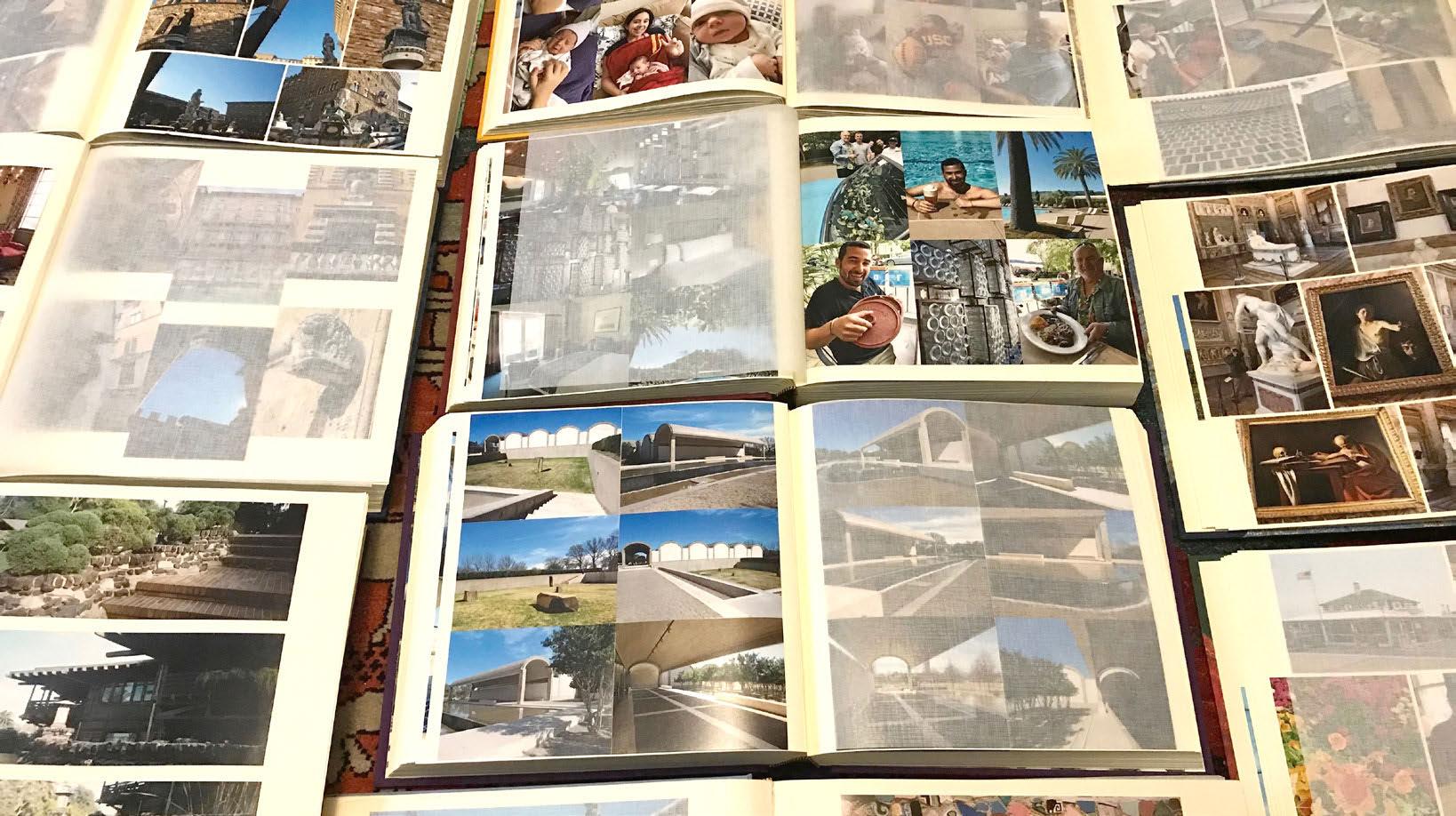
28 minute read
D'VAR TORAH 5 | CALENDAR 6 | OPINION 8 | FOOD 10 | COMMUNITY VOICES
from August 2021
COMMUNITY VOICES
Photography, portraiture and prayer
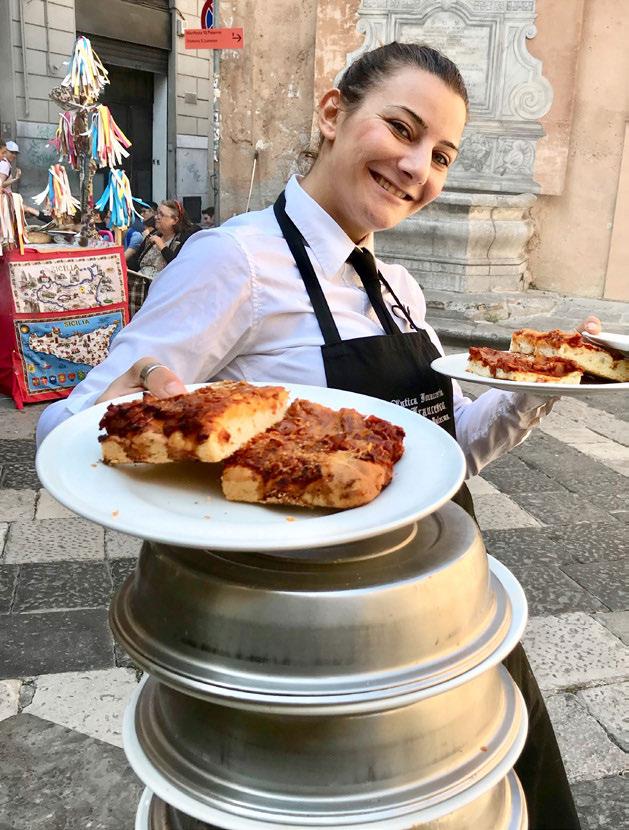
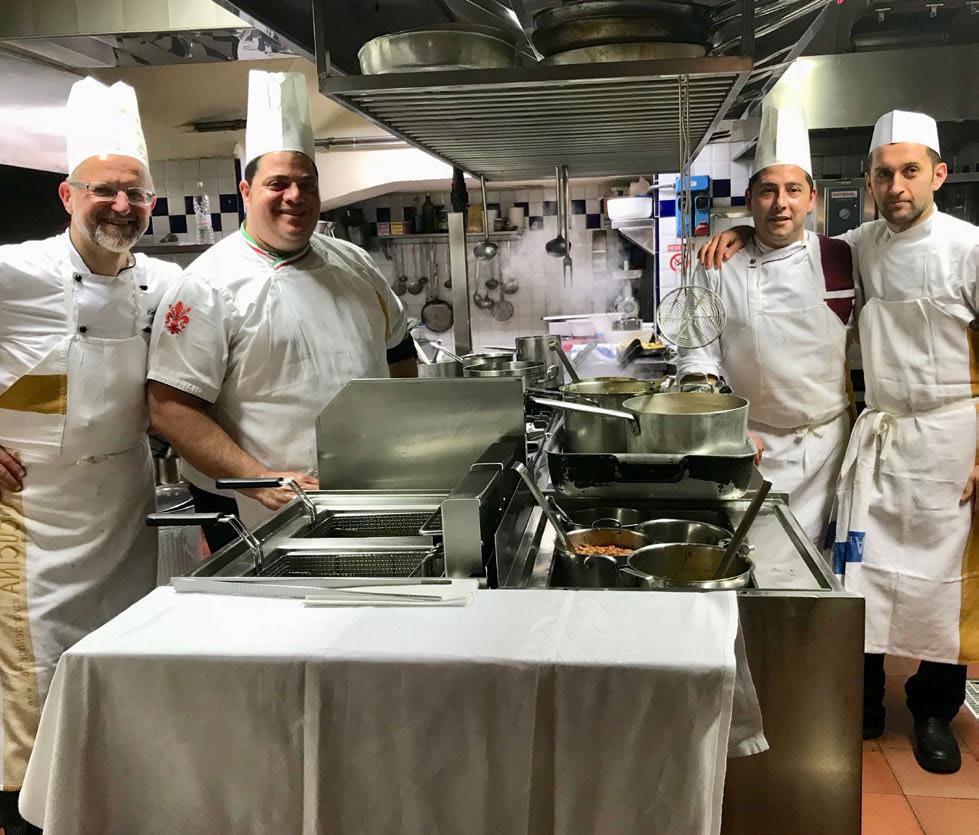
A group of photo albums, top. Above left, a photo from Palermo. Above right, a photo from Florence.
PHOTOS | GEORGE M. GOODWIN
BY GEORGE M. GOODWIN
Ilove taking photos, though I seldom refer to myself as a photographer. There aren’t many titles I happily wear. More often than not, George will suffice.
Compared to painting and sculpture, I’m not seriously interested in the art of photography. And quite seldom do I think of famous photographers as great artists. Of course, I was delighted in 1996 to conduct a phone interview with famed fashion and portrait photographer Richard Avedon, so I could learn about his father’s life as a furrier in Woonsocket.
THOUGH I WOULD NEVER pay a significant amount to purchase a photograph, I’m a fervent collector of photos. Indeed, I have created about 100 albums of my own photos over nearly 40 years.
Early in my career as an album-maker, perhaps a few hundred prints would fill a volume. In recent years, a typical album, handcrafted in Italy, protects about 700 horizontal and vertical prints.
I am particularly busy taking photos when I travel, but I habitually take photos in my East Side neighborhood and elsewhere around Rhode Island too. I’m far more interested in taking pictures of cities and towns than forests and pastures, though I have shot a favorite seaside spot in Maine for nearly three decades.
Photography raises questions about how I perceive my local and far-flung travels. Usually, the word “vacation” does not apply. Betsey and I are as busy as possible when venturing near or far; seldom do we go somewhere merely for relaxation. Fortunately, neither my wife nor I need to escape burdensome responsibilities or nagging chores. Indeed, when completing a brief or a lengthy journey, we’re usually quite happy to return to our quite comfortable home and our daily rhythms.
The number of photos I take in a day or during a month-long journey has increased exponentially over the decades. For example, as a student in Florence, Italy, in 1969, I probably took fewer than 10 rolls of blackand-white prints.
Instead, to record my observations, I kept a daily journal. I also purchased slides in museum shops to use in lectures when I became an art history professor.
Eventually, I took tens of thousands of my own slides and carefully organized them by subject. Fortunately, I still have a slide projector and a few extra lightbulbs!
My embrace of color prints surely increased after I met Betsey, since I wanted to celebrate all the happiness she brought me. And the number of prints fabulously increased after Molly and Michael were born. And I also sought to further portray my parents and in-laws when they became grandparents.
Despite my relative disinterest in technology, my life significantly changed again, less than a decade ago, when I began to experiment with digital photography. Not that I ever purchased a cellphone to use for making calls! Now I can easily shoot a few hundred digital shots in an afternoon, or 3,000 or 4,000 on a two-week journey. Of course, becoming a grandparent also may have contributed to my output.
So what do I plan to do with my scores of albums and others that I continually create? Our kids will surely be welcome to whatever they want, but they’ll never have enough space for most of them.
I actually inherited my album-making obsession from my mother, but my siblings and I didn’t know what to do with the dozens she left behind. I still feel ashamed that we couldn’t preserve more than a few.
I’m always striving to improve, and often I do, but for no obvious reason. Ironically, I take many of my best shots when I’m in a hurry or in some sense abandon control.
Nearly five decades ago, when taking drawing and painting classes, I began to learn about composition – how to perceive and organize the elements of design. And I’m still searching for that perfect arrangement. But I have also learned that luck may allow everything to magically fall into place.
Yes, serendipity may be the secret to a wonderful journey. Beyond my quite deliberate efforts to plan a daily itinerary, I hope to see and experience the world in fresh and unimagined ways.
Given that Betsey and I are Italophiles – we know and treasure that country in so many ways – I recently gave myself a challenge. Why not put aside such familiar subjects as museums, palaces, plazas, churches and synagogues, and create a photo essay about people? So I examined digital photos from five trips, Milano to Messina, and selected about 75 portraits. I had no idea that I had so few – or so many.
Not surprisingly, most of the Italians I portrayed were hotel staff, waiters, shopkeepers, drivers and other people whom tourists routinely encounter. Nevertheless, these were individuals I somehow cared about – even if for only a few days or a few moments. Most seemed proud to pose in their beautiful uniforms or garments, often amid stately or elegant surroundings. While some gestured in dramatic ways, others merely grinned or nodded.
Instantaneously, these Italians became old friends – even if I didn’t know their names or never saw more than a few again.
Then I pondered why I haven’t taken many similarly endearing portraits in Rhode Island. I wish that I had an answer. Perhaps the most basic is that here at home I’m reluctant to bother strangers, or sense that they don’t want to be bothered. Often when I encounter fellow pedestrians, they seem afraid to say hello.
Rather than preserving the past, photography, at its best, is a mechanism for seizing a moment. Thus, photography also allows me to experience what I don’t know and acknowledge so much that I never will. Photography is also prayer, for it allows me to celebrate the miracles of love and vision.
COMMUNITY VOICES
The tides and times of summer
I’VE BEEN TRYING to collect a few fine moments from this summer – with the pleasant prospect that August may add to my treasures.
We spent an early June weekend in Chatham, on Cape Cod, and my choice of mental “snapshots” was a tiny shack with an unkempt front yard, right in the midst S of the town. It’s a museum! And the weeds are actually the native wildflowers of long ago! The front room is a birthing chamber, and as a miniaturist, I was charmed by this wee celebration of yesteryear.
On the brink of July, with its jubilations galore, we gathered with our son and his family at the Weekapaug Inn, in Westerly, with its genuine log fireplace and its fresh staircase mural (by Rhode Island School of Design students) of native shorebirds among the pleasure boats – but my toast is to the tea in the lobby.
I paid ten bucks – $10! – for a cup of Earl Grey, but wait! It was served in a fine French cup, with a saucer, and the cream was in a small pitcher and the sugar in a wee bowl. With a cloth napkin, even.
While the weather during our stay at the inn wasn’t quite conducive to a swim in the sea, I am not complaining. Instead, I am complimenting the elegance of this little tea luxury. Totally worth the price, for the likes of me. Summertime for me has always included a quest for new books to take to small nooks for private and solitary pleasures. My good friends Betsey and George Goodwin presented me (gift-wrapped and ribboned) with a book titled “American Birds” and subtitled “A Literary Companion” – perfect for me. The excerpts are dated from 1782 to 2017, and written by the likes of Thoreau and Emerson, Emily Dickinson and Rachel Carson.
Are birds angels that carry messages from heaven to Earth and back?
I have managed, so far this summer, to get my fresh-water swims in my hidden, or public, lakes, both in Rhode Island (I won’t divulge the locations) and nearby Massachusetts. As for swims in the great ocean this summer, here’s my report: Yes, in coves, rivers and for a few fast plunges into the high
tides of our shorelines. I totally need these dips for my skin … all the way through to my soul. As I write these reminiscences, I am looking forward to a trip to KETCHBOOK the nation’s capital, if it is possible, to visit our daughter Lily and her family. And this summer, as in summers past, I will light two candles for my mother, who was born on Aug. 2 and died on Aug. 2. This is also one of my summer treasures, since grief is often followed by our state motto: Hope. MIKE FINK Sorrows are sacred, but so is the pursuit of happiness, as time and tide go by.

MIKE FINK (mfink33@aol.com) teaches at the Rhode Island School of Design.
Lessons from the past for the new year
AS THE HIGH HOLY DAYS APPROACH, it’s a good time to revisit excerpts from my book, “Pathfinding: Seven Principles for Positive Living.”
In the book,
which was H published in 2002, I write, “Learning from the past is earning from the past. The dividends of the positive lessons we’ve learned are the currency of our future.
“Stephen Pavuk, a guest on my radio program and coauthor of ‘The Story of a Lifetime: A Keepsake of Personal Memoirs,’ sums up the overall benefits of preserving family histories through writing.
“ ‘The benefit of all this overflows from the one who writes the memoirs. People learn from that person. They begin to see the good qualities in that person. It’s sort of like the ripple on the pond when you throw a rock in,’ he said. ‘It just flows into their families. It flows beyond that out into the world and then it flows to their descendants, to future generations. The benefits are both immediate and long-lasting.’
“This rock that causes the ripples is the weight of our own special heritage as we throw ourselves into the pool of life. We cause ripples by jumping, character first, into a world of characters who have their own heritage to honor or neglect.
“As I uncovered stories of my heritage through my father, I caught a glimpse into my past and an understanding of why I was taught certain lessons.”
Reflecting on those lessons before Rosh Hashanah is healing for me, and a good way to prepare for the coming new year.
Here is a story that my father told me, which is also in my book:
“Whenever we stayed with my grandmother, she would always tell us a story about a little boy and girl who, while walking through the woods, found a little boy who was crying. When they asked him why he was crying, he said he was hungry, so they took him home, made sure he ate and then they brought him to his own home.
“My grandmother’s story was intended to emphasize that the Torah (the Hebrew Bible) teaches us to perform mitzvahs (Hebrew word for a kind deed or considerate act). Now this is probably true in all religions, but in Judaism the purpose of mankind is to do good in the world. The phrase in Hebrew is Tikkun Olam,
which means to repair the world. “The Kabbalah, which is EALTHY LIVING a book of ancient Hebrew mysticism, likens the whole picture of life to a king who creates a beautiful castle with magnificent rooms, exquisite furniture, gourmet foods and fully-stocked libraries, yet no one comes to enjoy them. He waits his entire life for people PATRICIA to taste of the fruits of his labors. RASKIN “This is true of life, where we do not make use of all the good things that are available to us.” As I think about this story and other lessons from my father, I realize that enjoying our lives as we go through the process of learning lessons is just as important as the lessons themselves.
PATRICIA RASKIN, owner of Raskin Resources “German Motors goes above and beyond to provide the best service for the repair/up keep of my vehicle. I always feel very confident that they will do a great job at a reasonable cost. Everyone at German Motors is attentive and accommodating. Highly recommended.” –Fran M., Providence, MINI Cooper “SUPER SERVICE” BMW AUDI MERCEDES BENZ VOLKSWAGEN MINI BMW AUDI MERCEDES BENZ PORSCHE VOLKSWAGEN MINI COOPERMERCEDES BENZVOLKSWAGENMINIPORSCHEBMW AUDI MERCEDES BENZ PORSCHE VOLKSWAGEN MINICOOPER “Safety is our number one priority. We are capable of providing service without customer contact.” –Gerry and Denis Moreau Sales& Service G ERMAN M OTORS INC 879 North Main Street, Providence, RI 02904 401-272-4266 Email us at: germanmotorshelp@gmail.com
Productions, is a media host, coach and award-winning radio producer and business owner. She is on the board of directors of Temple Emanu-El, in Providence, and is a recipient of the Providence Business News 2020 Leaders and Achievers award.
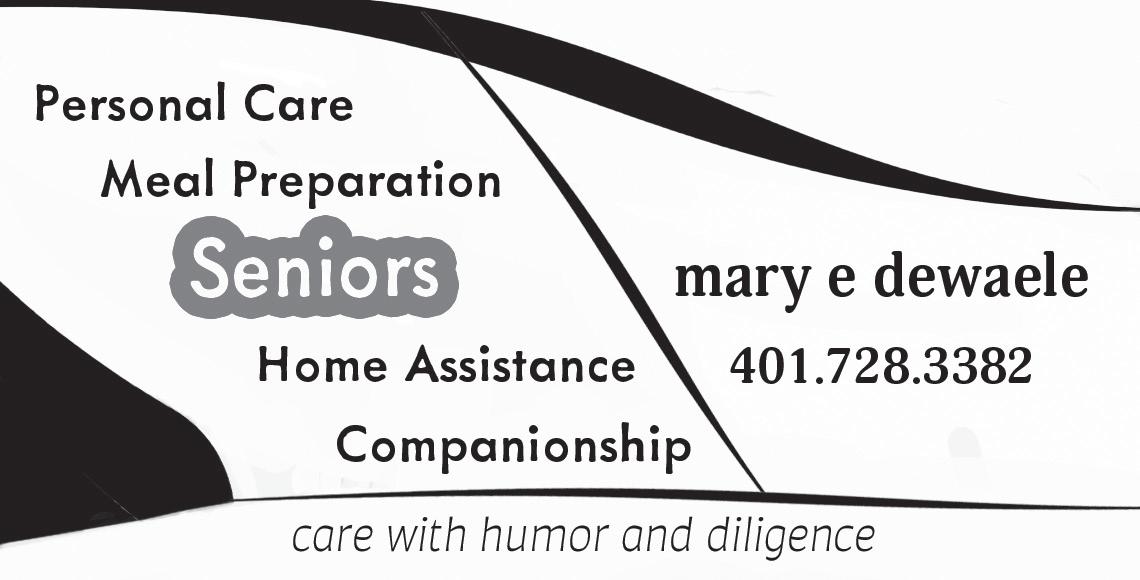
5782


MAKE A DIFFERENCE!
Rhode Island area schools seek part-time Hebrew and/or Judaica teachers, youth advisors and specialists for the 2021 - 2022 academic year.
For more information contact Larry Katz at the Jewish Alliance at 401.421.4111 ext. 179 or lkatz@jewishallianceri.org

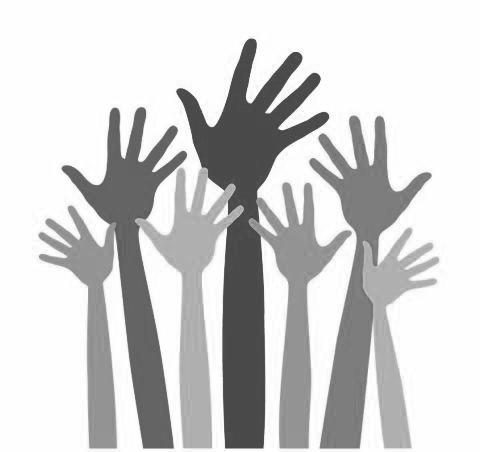
BUSINESS HSAs are a powerful, but overlooked, retirement asset
THERE ARE A LOT of ways to grow wealth in a tax-efficient manner, but a Health Savings Account (HSA) is still the best – and most overlooked – deal in the tax code.
That deal comes in the form of a compelling mix of tax breaks and other savings that can keep health-insur-
ance costs Ddown. But under the right circumstances, these accounts offer an even more powerful – and largely underappreciated – chance to boost your long-term savings and provide a nest egg to offset the rising cost of health care later in life.
Established as part of a federal tax law that took effect in 2004, HSAs are available to people who are in a high-deductible health plan. The savings begin with a triple tax advantage: • Contributions to an HSA net the contributor a current-year tax deduction of up to $3,600 for an individual and $7,200 for a family. • Any earnings or growth in the value of the money in the account is tax-free. • Funds withdrawn from the account are tax-free if they are withdrawn according to HSA rules and used for qualified health-care/ medical expenses.
While these tax advantages can certainly be useful to the many people who contribute to an HSA and use the account to pay health-care and medical expenses on an ongoing basis, it’s the longer-term possibilities that make it a particularly appealing tool for people saving for retirement.
Funds in an HSA can be used to cover qualified health-care and medical expenses at any stage in a person’s life, including retirement, when they can be used to pay Medicare premiums, long-term-care insurance premiums, longterm-care expenses, and day-to-day costs, from copays to prescription drugs to high-priced surgeries. Those costs can add up over time, particularly during retirement, when people are more likely to need health care. According to Fidelity Investments, the average retired couple, age 65 in 2021, may need about $300,000 in savings (after taxes) to cover health and medical expenses. That figure is in today’s dollars and excludes potentially expensive long-term care.
So rather than using an HSA mainly as a revolving account to cover qualified expenses in the short-term, there’s value to using it as a long-term savings vehicle. Many HSA providers even offer IRA-like mutual-fund investment options, in addition to a base savings account.
Such a strategy works in large part because of the triple tax advantages associated with an HSA: Contributions, any growth inside the account, and distributions (withdrawals) from the account are all tax-free when used for qualified medical/health-care expenses.
By investing your HSA savings as you would your retirement savings – typically in a diversified mix of mutual funds that offer
the opportunity for longterm growth – you’ll build a tax-free fund dedicated to health costs in retirement, which are likely to represent a significant portion of your future budget. The O LLARS & SENSE chance to add another pool of tax-deferred money to your retirement savings is an advantage you shouldn’t ignore. Leading up to and during retirement, the funds in an HSA can always be used, tax- and penalty-free, for medical/health expenses. When the account holder JASON E. hits age 65, HSA funds can SIPERSTEIN be used for any purpose without penalty (although the account owner will have to pay income tax on distributions that aren’t for medical/health expenses). Also, at age 65, account owners can use HSA funds tax-free to pay premiums on Medicare and certain kinds of insurance, such as for long-term care. Regardless of your
Regardless of your stage in stage in life, it’s worth considering contriblife, it’s worth considering uting to an HSA, and, if cash flow permits, contributing to an HSA leaving at least some of the funds in the account as a long-term investment for retirement – because every dollar you put in an HSA and save for retirement health-care expenses will take some stress off your other retirement accounts. JASON E. SIPERSTEIN, CFA, CFP, RMA, is the chairman of the Financial Planning Association of Rhode Island, program director for the CFA Society Providence and president of Eliot Rose Wealth Management. He can be reached by email at jes@eliotrose.com. This is his final column for Jewish Rhode Island.
HOLOCAUST EDUCATION UPDATE
Mandatory Holocaust education across the U.S.
The following 19 states require secondary schools to teach about the Holocaust.
• Arizona
• Arkansas (as of 2022)
• California
• Colorado
• Connecticut
• Delaware
• Florida
• Illinois
• Indiana
• Kentucky
• Michigan
• New Hampshire
• New Jersey
• New York
• Oregon
• Rhode Island
• Texas
• Virginia
• Wisconsin
Source: U.S. Holocaust Memorial Museum
Holocaust education strengthened in R.I., in the pipeline in Mass.
BY LARRY KESSLER
EFFORTS BY RHODE ISLAND AND MASSACHUSETTS to make Holocaust education mandatory in their schools read like a tale of two states: The Ocean State has done so, while Massachusetts’ latest attempt is again making its way through the state Legislature.
The R.I. General Assembly passed a law in 2016 requiring Holocaust and genocide education in middle and high school??, and Gov. Daniel McKee in July signed additional legislation creating a permanent commission “to promote and continually improve genocide and Holocaust education in schools,” according to a news release from the bill’s sponsors, Rep. Rebecca Kislak and Sen. Gayle L. Goldin.
The commission’s goal is to implement the 2016 law.
In Massachusetts, House and Senate bills with similar goals of requiring Holocaust education received a hearing in May, and now await action to move to the next stage: votes in both chambers. Similar efforts have failed in past legislative sessions.
Here’s a closer look at the Holocaust-education initiatives in both states:
Rhode Island
Before the new commission was created, the 2016 law lacked an enforcement mechanism, said Paula Olivieri, education coordinator at the Sandra Bornstein Holocaust Education Center, which is housed in the Alliance’s Dwares Jewish Community Center, in Providence.
“The commission will oversee the law requiring Holocaust and genocide education. The hope is that it will ensure” compliance with the 2016 law, Olivieri said.
According to the bill, “the Holocaust and Genocide Education Commission will gather and disseminate Holocaust and genocide information, work with the Department of Education to update and promote statewide Holocaust and genocide education programs and promote public awareness of issues relating to Holocaust and genocide education.”
The bill’s sponsors say they are encouraged by the creation of the commission.
“Given the hate and bigotry that is common in public discourse today, it is especially important to educate students about the incredible damage that prejudice and intolerance have caused throughout history,” said Goldin, whose grandparents fled the pogroms in Eastern Europe for Canada.
“The best way to ensure our future generations never repeat these actions is to teach them about the impact the Holocaust and other genocides have had in our world. Learning about our past provides perspective on current world events. It is also an opportunity for people to
learn from one another about experiences of oppression,” said Goldin, District 3, Providence, who lost family members in the Holocaust.
Rep. Kislak, in backing the commission’s formation, cited the number of Ocean State residents affected by genocides.
“So many Rhode Islanders’ families are from communities that have been impacted by genocides. Listening to each other’s stories and learning about those diverse histories will help us see the humanity in one another and build stronger communities,” said Kislak, District 4, Providence.
Massachusetts
Legislators in the Bay State are hopeful that there will be action on the House and Senate bills, which were the subject of a virtual hearing May 20 by the Legislature’s Joint Committee on Education. Both genocide-education bills were discussed during a more than fivehour hearing on 45 education-related bills.
Under the language in both bills, the education commissioner would set up and administer a separate fund, called the Genocide Education Trust Fund, to pay for Holocaust and genocide education in the state’s middle and secondary schools.
The Senate bill is sponsored by Sen. Michael J. Rodrigues, who represents parts of Bristol and Plymouth, and the House bill is sponsored by Rep. Jeffrey N. Roy, 10th Norfolk district.
Massachusetts Rep. Adam Scanlon, 14th Bristol district, said he supports the bill because “teaching the history of genocide is critical to creating well-informed and inclusive communities, which alone makes the bill worthy of support. It is a bipartisan bill, which also shows a commitment from many to this topic and for public education in general.”
Scanlon explained what will happen next: The committee must decide whether to issue a favorable report to move the bill to a full House vote; consider it as part of a larger education bill; or send it to a study committee – which usually means the legislation is unlikely to come up for a vote in the current session.
Another Southeastern Massachusetts legislator, state Rep. Jim Hawkins, has signed on as a co-sponsor.
“I am so very much in favor of this. We cannot sugarcoat our history and hope to advance as a society,” said Hawkins, who represents part of Bristol.
“I have read that many people don’t remember, or even deny, that the Holocaust happened. And if we don’t talk about the Holocaust, it will be all too easy to dismiss hatred as harmless,” he said.
Holocaust education is personal for state Sen. Becca Rausch, whose Norfolk, Bristol and Middlesex district encompasses much of the Attleboro area. Rausch said her grandfather, from Augsburg, Germany, survived the Nazis. She spoke passionately about the Holocaust and the genocide-education bill during a previous hearing, on Aug. 3, 2020. “We only combat hate with education and meaningful dialogue, and that’s what this bill does; that’s why I’m proud to stand today and support it,” she said. “I am the granddaughter of a Holocaust survivor, and the vast majority of that branch of my family was completely wiped out in the Holocaust.” Rausch, in a phone interview, said she’s a co-sponsor of the bill this year, and is hopeful it will pass the Senate, as it did last year. But she stressed “The truth is that if we don’t that schools shouldn’t wait for the legislation to be [educate people], history is approved to start teaching about the Holocaust and doomed to repeat itself,” other genocides. She urged teachers to use available resources to work toward that goal. “It’s becoming more important that we engage” people given the resurgence of anti-Semitic incidents, she said. “I know the significance of using ‘Auschwitz’ as a football term,” which the Duxbury High team had been doing for years, until it was widely reported in the media and led to the firing of the football coach at the Massachusetts school. “The truth is that if we don’t [educate people], history is doomed to repeat itself,” Rausch warned. “The way to generate healing is through education,” she added.
LARRY KESSLER (larrythek65@gmail.com) is a freelance writer based in North Attleboro.
HOLOCAUST EDUCATION UPDATE
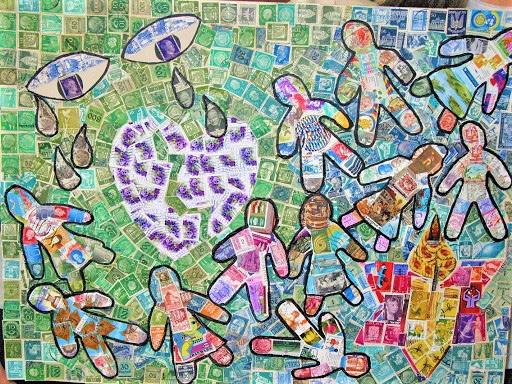
COURTESY | CHARLOTTE SHEER
This collage, made by students at the Foxboro Regional Charter School as part of the Holocaust Stamps Project, pays tribute to Denmark, which was the only nation that went to great lengths to save its Jewish neighbors. Forty students in grades 5 through 8 completed the collage.
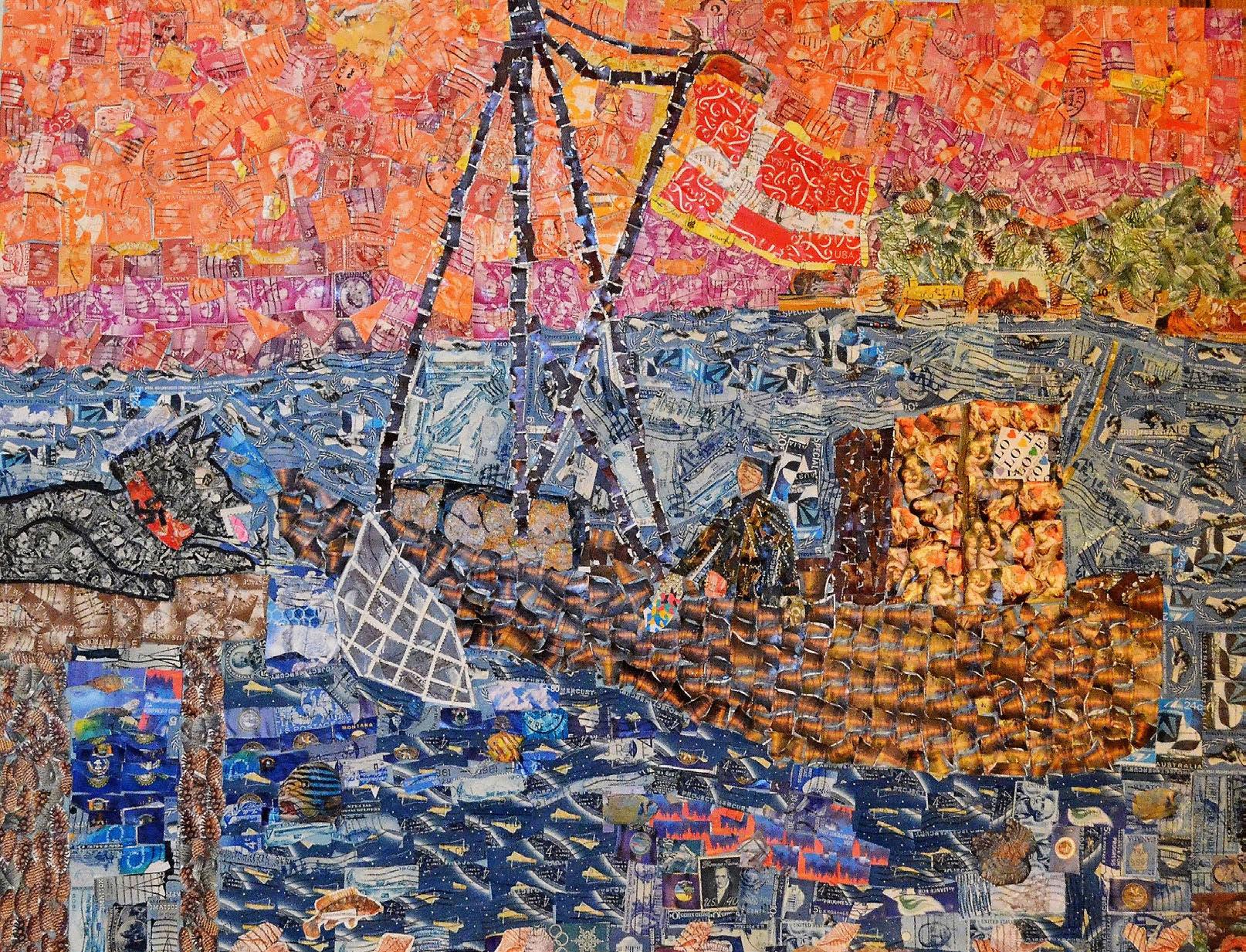
“Eleven million reasons to never forget.”
This collage, made by students at the Foxboro Regional Charter School as part of the Holocaust Stamps Project, was completed on Jan. 27, 2012, which is observed annually as International Holocaust Remembrance Day. The collage contains 850 stamps, and the artwork symbolizes the 11 million victims of the Holocaust.
Educators: Holocaust education helps ensure we never forget
BY LARRY KESSLER
HOLOCAUST EDUCATION can play a major role in making both students and adults more aware of the genocide, say two educators with experience in the field.
Paula Olivieri, the education coordinator at the Sandra Bornstein Holocaust Education Center, in Providence, said in an interview that the legislation recently passed by the R.I. General Assembly to create a permanent commission to promote and continually improve genocide and Holocaust education will go a long way toward making more people aware of the atrocities of the Holocaust.
Asked if she thinks Holocaust education can reduce anti-Semitism in schools, such as at Duxbury High School, in Massachusetts, where the football team reportedly had been using “Auschwitz” as a term to call football plays for several seasons, she said she’s optimistic that it can.
“You find that students are more aware of the Holocaust and genocides” in states where Holocaust education is mandatory, she said.
Currently, 18 states, including Rhode Island, require Holocaust education, and there will be 19 next year, when Arkansas’ law takes effect, according to the U.S. Holocaust Memorial Museum.
Another educator, Charlotte Sheer, who founded the Holocaust Stamps Project at Foxboro Regional Charter School in the 2008-09 school year, knows that Holocaust education works, because she did so on her own at a time when only five states required it.
The stamps project was embraced by the entire school, she said.
“For 10 years, students in kindergarten through grade 12 worked together, trimming and counting stamps, and creating 18 stamps collage artworks depicting aspects of the Holocaust. Making children aware of the historical facts opened the door to understanding how destructive prejudice can be,” she said.
“Today’s children are tomorrow’s parents – and leaders. What is taught in school today provides the foundation for how tomorrow’s adults will conduct their lives and treat each other,” Sheer added.
Recent remarks by public figures using the Holocaust to make political points seem to support the notion that more Holocaust education is needed. Two recent incidents – one national and one locally – illustrate this point. • Georgia Rep. Marjorie Taylor Greene in May compared the Nazis’ persecution and murder of 6 million Jews to people being urged or ordered to wear masks during the pandemic, and/or being asked for their COVID19 vaccination status. • A Dighton-Rehoboth Regional School Committee member, Katie Ferreira-Aubin, in July compared requiring vaccines and vaccine passports to the Holocaust, remarks she later defended. “When you explain things in that extreme, it does get people’s attention to kind of say, ‘OK, maybe our freedoms are being taken away right now.’ So, sometimes you do have to use extremes to get attention. But I stand by it,” she told WJAR-TV Channel 10.
Both the Anti-Defamation League of New England and Dighton-Rehoboth schools Superintendent Anthony Azar strongly condemned her remarks.
The educators said they believe that mandatory Holocaust education will reduce such incidents.
LARRY KESSLER (larrythek65@ gmail.com) is a freelance writer based in North Attleboro. He blogs at larrytheklineup.blogspot.com.
HOLOCAUST EDUCATION UPDATE
The power of Holocaust education
THOSE WHO DOUBT how much Holocaust awareness will be raised by the mandate to teach about the Holocaust and genocide in Rhode Island’s middle and secondary S schools should familiarize themselves with the Holocaust Stamps Project.
Massachusetts had no such mandate in the 2008-09 school year, when the seed to start what became the Holocaust Stamps Project was germinated in the classroom of then-fifth-grade teacher Charlotte Sheer at the Foxboro Regional Charter School. (Massachusetts still lacks such a mandate. Two bills are awaiting action to move them toward a vote in the state Legislature.)
But the absence of a law requiring Holocaust education didn’t deter Sheer’s determination to enlighten her young students. After they read Lois Lowry’s
“Number the Stars,” an historical-fiction novel set in Nazi-occupied Denmark in 1942, the students asked some probing questions about the Holocaust – including “How could that happen?” and “How many is 6 million?” – and an idea soon took shape.
“I shared with these 10 and 11 year olds that it was not only Jewish people who were in danger. Anyone whose skin color, beliefs or culture wasn’t part of the Aryan way, or who had some form of disability, was in danger, bringing the total number of targeted victims closer to 11 million,” Sheer said in an interview. “In our culturally diverse classroom, a seed of awareness was planted.
“With a number so unfathomable [11 million], I chal-
lenged the class to try collecting one postage stamp for PEAKING OUT every person who perished in the Holocaust. Why stamps? They’re small and accessible. The intent was to use stamps as a symbol for something of value being discarded, as millions of people’s lives were thrown away by the Nazis. “By June that year [2009], they’d struggled to amass LARRY KESSLER about 25,000 stamps. The children were just beginning to sense the enormity of the number 11 million.” But that was just the start. Sheer’s idea developed into the Holocaust Stamps Project, and became a regular component of the school’s Community Service Learning program. Sheer said the project set a goal of collecting 11 million stamps to represent the 6 million Jewish victims of the Holocaust as well as the 5 million people from 21 European countries who were slaughtered as part of the Nazis’ “Final Solution.” The 11 million includes the

A progressive independent school on a scenic twelve-acre campus
1.5 million children who were Holocaust victims.
The project took off, and reached heights unimagined in its early days. Sheer and a fellow teacher at the Foxboro school, Jamie Droste, who took over the project’s day-to-day chores after Sheer retired, were inundated with donations. Stamps poured in from across the globe, and the goal of collecting 11 million stamps, once considered daunting or even impossible, was reached before Yom Kippur in 2017.
The project also produced 18 collages made from the stamps, each depicting moments and people from the Holocaust. These, along with the stamps, have since found a permanent home at the American Philatelic Society’s center, in Bellefonte, Pennsylvania.
The project sent the message that Holocaust education can serve as a powerful weapon against the rising tide of anti-Semitism and Holocaust-related ignorance, which has spawned such incidents as the use of the name of the notorious Nazi concentration camp Auschwitz as a term to call football plays – as the Duxbury High School team, in Massachusetts, had reportedly done for years until the story broke in the media in March, which led to the firing of its longtime football coach.
Holocaust education won’t end all ignorance, but in raising awareness about the genocide, it can help send a message that anti-Semitism and use of Nazi symbols is unacceptable.
In addition, a strong education about the Holocaust can lead to people reaching out to help in unexpected ways.
That happened to me several years ago, in 2015, when, after writing extensively about the stamps project, at The Sun Chronicle, of Attleboro, where I had worked since 1989, I got a call from a woman in Vermont. Alice Dulude said her husband Bill, a retired Attleboro firefighter and stamp collector, bought a huge box of stamps at a show, and they thought it’d make a good donation for the stamps project.
Not long after her call, her son, Bill Dulude Jr., dropped off the box to me, and I got it to Sheer, who was ecstatic with the more than 60,000 stamps.
That gift still resonates with me, because it shows what the power of education can do to make people understand the horror of the Holocaust.
LARRY KESSLER (larrythek65@ gmail.com) is a freelance writer based in North Attleboro. He blogs at larrytheklineup.blogspot.com.


